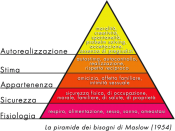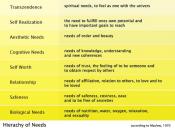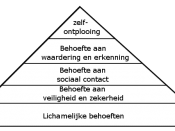Running head: ROY AND MASLOW'S THEORIES AND THEIR EFFECT
Comparison of Callista Roy and Abraham Maslow's theories in regards to nursing today.
Roy and Maslow's Theories
and Their Effect on Nursing
Melissa Buzbee
University of Wyoming
Abstract
The theories of Sister Callista Roy and Abraham Maslow were identified and discussed in relation to their impact on nursing care. The environment and a person's level of adaptation to both external and internal stimuli were identified as the basis for Roy's Adaptation Model for Nursing. It was broken down into four adaptation modes and how they relate to the environment. It was further evaluated by comparing it to the nursing process step by step. The five levels of Maslow's Hierarchy of Needs were identified and explained that the attainment of each level allows progression to the next. This concept was identified as a key component to developing a care plan for a nursing client.
Both theories were evaluated and major criticisms were identified. Overall, both were shown to be of great value to the nursing profession.
Roy and Maslow's Theories
and Their Effect on Nursing
Many theorists' models have been used in the progression of nursing through the years. Although they all have different ideas and approaches, every one of them centers on the health and wellness of the client. This paper will discuss the views of two theorists and their effect on nursing today.
Sister Callista Roy, in 1970, first published her ideas on a new conceptual framework for nursing. In an article entitled, "Adaptation: A Conceptual Framework for Nursing", she described how a person's ability to adapt to their environment effects their health status (Roy, 1970). Since that time, the theory has been used extensively in nursing schools to establish a philosophical basis for their programs.
There are five...


